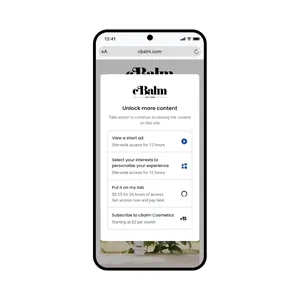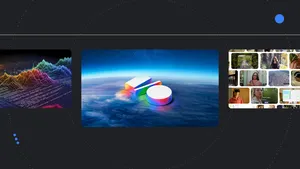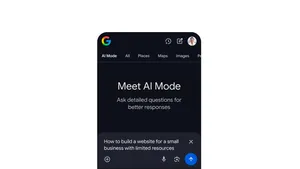Be ready for what’s next: growing your business in 2022

Like many of you, I’ve spent the first month of 2022 ramping back up at work and making progress on plans for this year. And while there still isn’t a playbook for navigating a pandemic that’s upended daily life, my team is continuing to focus on ways Google can help you respond and deliver on your greatest business needs.
Buying behavior will continue to change, and people will use technology in new ways to discover products and brands. That’s why my team and I are more committed than ever to connecting consumers with the businesses around them, while continuing to power a free and open internet.
This is an intentionally ambitious goal, and today, I want to share the three priorities that are guiding our product roadmap: unlocking new opportunities for business growth, preparing for the future of measurement and ensuring we exceed consumer expectations for privacy.
Unlocking new opportunities for growth with automation
Shifts in consumer behavior continue to present challenges and opportunities for businesses around the globe. And despite some parts of the world reopening, it appears many of these shifts will not only stay, but accelerate. Take food delivery, for example. Searches for “takeout restaurants” surged 400% last year compared to the start of the pandemic. 1
In meeting with many advertisers, I’ve heard how readiness, speed and agility have been critical for managing complexity and driving growth in these uncertain times. That’s why advertisers are turning to automation more than ever before. In fact, over 80% of Google advertisers are now using automated bidding to free up time and improve ad performance. 2
It’s also important to build on innovations like Performance Max campaigns — and make them easy to use. This single campaign enables marketers to find incremental, high-value customers across Google’s full range of advertising channels and inventory. By simply providing conversion goals, audience signals and a number of creative assets, advertisers that use Performance Max campaigns in their accounts have seen an average increase of 13% total incremental conversions at a similar cost per action. 3
Performance Max campaigns help you increase conversions across
Google’s full range of advertising channels and inventory.

Similarly, Discovery campaigns allow you to reach up to three billion users across Google feeds like YouTube and Discover — all from a single campaign. You can deliver highly visual, inspiring and personalized ad experiences to people who are ready to discover your brand.
Across all Google Ads campaigns — including Video action campaigns and Smart Display campaigns — our data shows that automation is unlocking growth for businesses around the world. This is especially true for Search campaigns. As we continue improving our Search products, we’re seeing the multiplicative effect of using automated targeting, creative and bidding together.
One of my favorite examples comes from tails.com, which is based in the UK. The tailor-made dog food brand took a test, learn and scale approach as it expanded into new markets across Europe. Using the combination of broad match, Smart Bidding and responsive search ads, tails.com increased sign-ups in Germany from its generic Search campaigns by 182%.
Preparing for the future of measurement
Whether it’s Google Ads or Google Analytics, the products you use should help you solve the unique challenges facing your business. They also need to deliver meaningful results and performance, especially during times of change and uncertainty.
For example, we know that new approaches to measurement are critical as cookies and other identifiers are phased out. The future of measurement is combining consented first-party data with insights from new, privacy-safe technology, like browser APIs, and using modeling to close data gaps. Solutions like enhanced conversions, consent mode, conversion modeling and data-driven attribution allow you to respect your customers’ privacy preferences, while confidently measuring the impact of your ads.
First-party data is not only critical for measuring your media, it’s also essential in understanding your customers. Our research shows that companies that link their first-party data sources can generate 1.5 times the incremental revenue from single ad placement, communication or outreach. 4 Assigning value to your conversions, and using first-party data solutions like Customer Match, enable you to express what’s most valuable to your business and find opportunities for growth.
Exceeding consumers' expectations for digital privacy
There’s been a massive acceleration in the way people use technology to connect with businesses during the pandemic. Meanwhile, there are rising expectations for user privacy and control. You have to meet your customers where they are and build meaningful relationships in a privacy-safe way.
A great example is PepsiCo’s loyalty programs. Each program — unique to market dynamics — delivers clear value to its members in exchange for shared, consented data. The data are used to provide personalized experiences, like instant offers and recipes, based on users’ snack and beverage preferences. This approach not only ensures that PepsiCo honors its customers’ choices while protecting their privacy, it also increases efficiency in its media — resulting in a 200% ROI improvement for some campaigns.
We recently updated our privacy playbook to help you build these types of meaningful, memorable and manageable relationships with your customers — while keeping privacy at the core of how you measure and optimize for success.

Empowering best-in-class marketing
Whether a global brand like PepsiCo or an online business like tails.com, your stories of resilience and ingenuity continue to inspire my team to build for the future.
There’s never been a more exciting time to be a marketer, and we’re here to be your partner along the way. As you make progress on your plans for the year ahead, continue to share your stories and feedback within the product and at events like Think Retail and Google Marketing Live. We’ll continue listening, sharing insights and building products to help you come back stronger in 2022.





